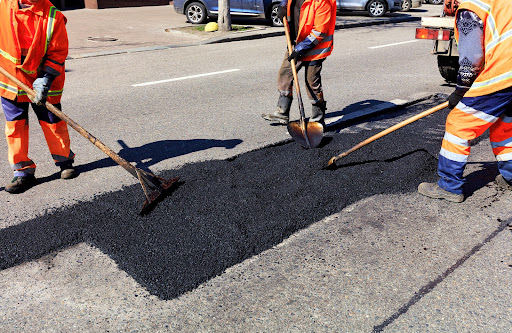
Every now and then, you will need a utility cut repair. But what exactly does this entail? And is this service even necessary?
A utility cut is a process that involves excavating an existing surface to repair subterranean utility equipment or ducts. While it may not seem like it, tons of utility conduits run through and below the ground. When these utilities require repair, it is necessary to cut the surface to get to the equipment.
You can also use utility street cut repairs for new installations of utility conduits. After installing or repairing the utility, filling and patching the excavated surface is vital. This way, you can protect the newly installed utility. Moreover, vehicles and pedestrians can pass through safely.
Sometimes, the contractor performing the utility cut and installation fails to perform the restoration properly. This often results in uneven surfaces, which can cause damage to vehicles and accidents to pedestrians. This is where a utility cut repair comes in. A utility cut repair simply fixes the cut and restoration job of the previous contractor.
When you don’t know what the process involves, it is often difficult to understand the significance and complexities of a utility cut. While there may be some variation depending on the case or contractor, these are the general steps of a utility cut repair.
The first thing to do is identify where the utility sits. Which part of the asphalt or concrete surface needs to be cut? This is also the part where you determine the shape and size of the cut. These will depend on the size of the utility that requires attention.
Generally, it is best to cut longer than the width of the planned trench. This will form a T-section, making the restoration job last much longer.
After planning, the next step is to make the actual cuts. This will usually require commercial-grade equipment and precision. As such, you should always leave utility cut repair jobs to professionals.
After making the cuts, it is time to remove the asphalt or concrete. If the removal process cracks adjacent slabs or surfaces, it could lead to surface defects. Thus, expanding the utility cut restoration area is better for making a cleaner boundary.
The third step is to excavate the subbase or subgrade. Excavation is necessary to get to the utility that requires attention. Similarly, excavation is necessary to reach the depth required for the new utility if you are installing a new utility.
There are several ways to excavate the subbase or subgrade. Some might use a skid steer loader or a backhoe. It is also possible to do it by hand or using a special vacuum. Regardless of the method, the need for excavation remains clear.
Depending on the type of subgrade or subbase, you may need to perform shoring to prevent the trench from caving in. Other factors to consider for shoring include the depth of the trench and the condition of the subgrade once excavated.
The next step is to repair the existing utility or install a new one. The amount of time required to complete this part of the process greatly depends on several factors. These factors include but are not limited to the type of utility, the extent of damage, the number of people working on the project, and the weather conditions (if outside).
The final step is to restore the utility cut. This involves reconstructing the subbase or subgrade by backfilling it with the proper materials. Sometimes, a contractor must install dowels or tie bars to reinforce the restoration. The patch will be compacted using special equipment or even a heavy vehicle.
Not all contractors focus on this part of the process, though. Some do a haphazard job of restoring the utility cut, using quick but ineffective methods such as throw-and-go or throw-and-roll. This often results in a shorter lifespan for the patched utility cut. Thus, a bonus step in the process is utility cut repair, when a contractor remedies or redoes the patch.
Repairing utility cuts is not something that just anyone can do. It requires expertise, the proper equipment, and the right safety gear. While you may feel tempted to repair the cut yourself, it is best to call a professional technician to do it for you.
Professionals have the necessary tools and equipment for the job. They also have the knowledge and experience to repair the utility cut more efficiently and effectively. Some utility cuts need to pass through certain state and local regulations, and a licensed company is more adept at following these regulations.
Infrared technology is also becoming the norm regarding utility cut repairs. The beauty of infrared repair is that it can do things other patch methods can’t do. It can create seamless overlays, adjust elevation, and level asphalt surfaces. But, more often than not, only professionals can access infrared patching technology.
Utility cuts are needed to install new utilities or repair existing ones. Unfortunately, not all contractors exercise care and caution when restoring these cuts. And most of the time, you will need utility cut repair to get a more seamless and long-lasting result.
RELATED ARTICLES: